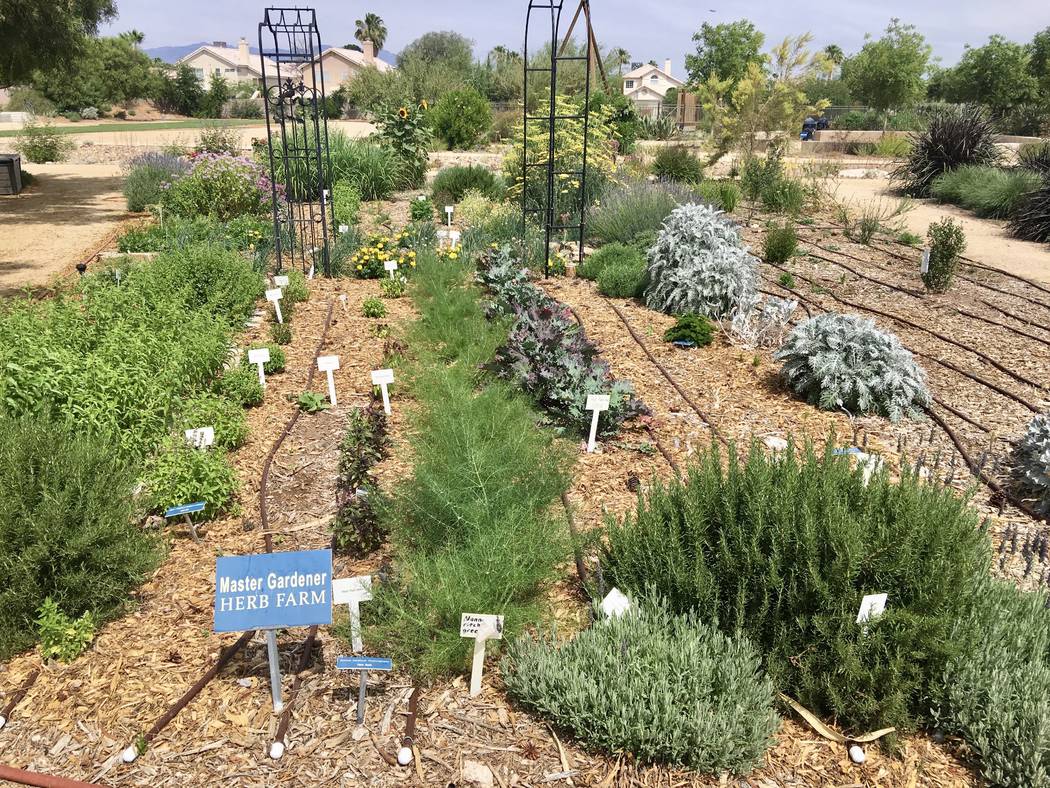Dye gardens produce full palette of natural colors
Fresh basil, rosemary and onions.
What may sound like the ingredients of a good soup recipe are actually herbs and vegetables found in a natural dye garden. This unique approach to gardening yields natural dyes used for a variety of purposes including fiber art materials such as yarn and fabric as well as eggs, vinegars and bath products.
“I’ve learned a lot about the connection to nature,” said Monique Portanger, a longtime member of the Las Vegas Fiber Arts Guild, “and how much nature can give to you, not only in terms of health benefits but also in terms of the colors.”
The use of plant byproducts from vegetables, flowers, herbs and roots to dye textiles has been around for centuries and is regaining popularity all over the world.
“Dye gardens are fascinating because the constituents in the plants that give the natural dye colors are the same constituents that provide some of the medicinal benefits in the plants,” said Christine Dalziel of Joybilee Farm in Washington state.
Dalziel has been studying natural dyes for over 18 years.
“So if you are coloring cloth with the plants, you are also transferring that comforting, healing virtue to the cloth,” she said.
A dye garden can be grown easily in a designated garden, existing landscaping or in containers. However, before planting, there are a few things to consider when setting up a natural dye garden.
One consideration is the proper selection of native plants to ensure compatibility with the desert climate, as dye content is significantly influenced by temperature, humidity and sun exposure. Most plants in a dye garden are grown from seeds or starter plants.
“It can be hard to find seed for some of these dye plants,” said Dalziel, who recommends resources such as Seed Savers Exchange or Richter’s Herbs in Ontario, Canada. “The herbal seed houses still stock seed for these rarer dye plants.”
Although herbs and vegetables thrive in the desert climate, they need additional water and will not be as lush as herbs grown in more humid climates, according to Glenda Thompson Bona, a master gardener with the University of Nevada Cooperative Extension and chairwoman of the Master Gardeners of Southern Nevada Herb Committee.
“Herbs will take the heat and withstand hot summers,” Bona said. “They will even tolerate full sun. When the summer heat makes vegetables shrivel and turn brown, most herbs are still green and happy.”
According to Bona, the two different planting times for our area are spring (late March to June) and again in the fall (September and October).
“Since the soil in our area has very little organic material, you do need to supplement,” Bona said. “In our gardens, we mixed in compost and some top soil. We mulch on a regular basis and we do not fertilize our herbs!”
If planting a designated garden, it is important to plan it out, planting in rows based on the height and lifespan of the different plants, said master gardener Cameron Stay.
“The biggest thing is planning the garden,” Stay said. “If you don’t plan the garden right, it won’t come out right.”
Growing dye plants is easy and, upon harvesting the plant material, dyeing is not difficult. Some vegetables or herbs can be used by simply boiling the plant material in hot water for an extended period of time — doubling the amount of water to the amount of chopped plant material.
Once the desired color is achieved, dyeing is accomplished by straining the plant material from the water and immersing the desired fabric or other fiber into the dye. Natural fabrics such as cotton and wool take dye more easily.
Portanger stated an onion skin is a good example of creating a natural dye from boiling plant material. Bona uses purple basil to infuse her vinegars.
“Adding purple basil to wine vinegar was such a great surprise,” Bona said. “In less than a half hour, the color of the liquid changed to the prettiest pink.”
However, creating some permanent dyes may require treating the fabric or yarn with a specific compound known as a mordant before dyeing. Some common mordants include aluminum and chrome.
Portanger cautioned that some mordant compounds, such as copper and tin, can be poisonous and recommends using separate pots when using natural dyes. The mordant makes the dye colors brighter and less likely to fade.
“People who are interested can just dabble,” Portanger said about growing a natural dye garden. “They don’t have to do a lot to get something out of it. It’s a lot of fun. I love it.”
Natural dye plants for our desert climate
These plants are based on recommendations made by the Master Gardeners of Southern Nevada and members of the Las Vegas Fiber Guild. Colors vary by cooking method, with or without a mordant.
■ Rosemary
■ Calendula (commonly known as pot marigold)
■ Purple basil
■ Madder
■ Blue-flowered lupine
■ Comfrey
■ Eucalyptus leaves
■ Hollyhock flowers
■ Rabbitbrush
■ Yarrow flowers
■ Lemongrass
■ Cliffrose
■ Lavender
■ Roses
■ Sage
■ Aster flowers
■ Dahlia flowers
■ Zinnia flowers
■ Iris flowers
■ Yellow onions
■ Beets
■ Carrots
■ Red cabbage
■ Peppers
■ Cucumber






























